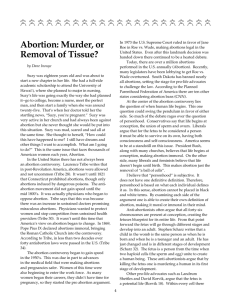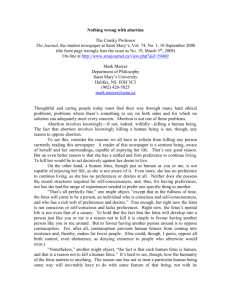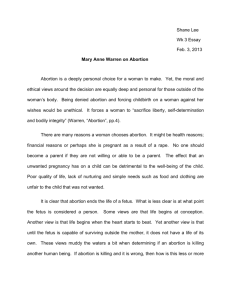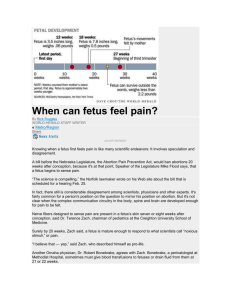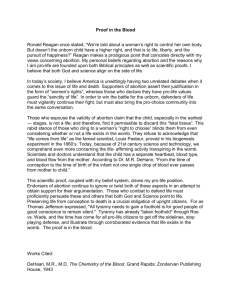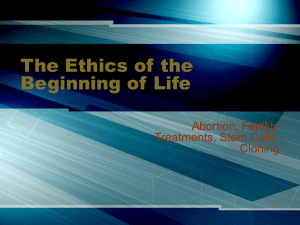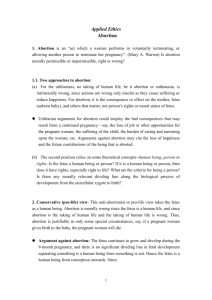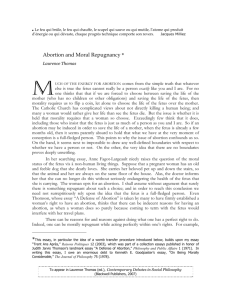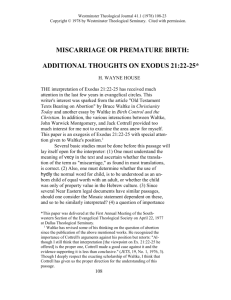A fresh analysis - Elon University
advertisement
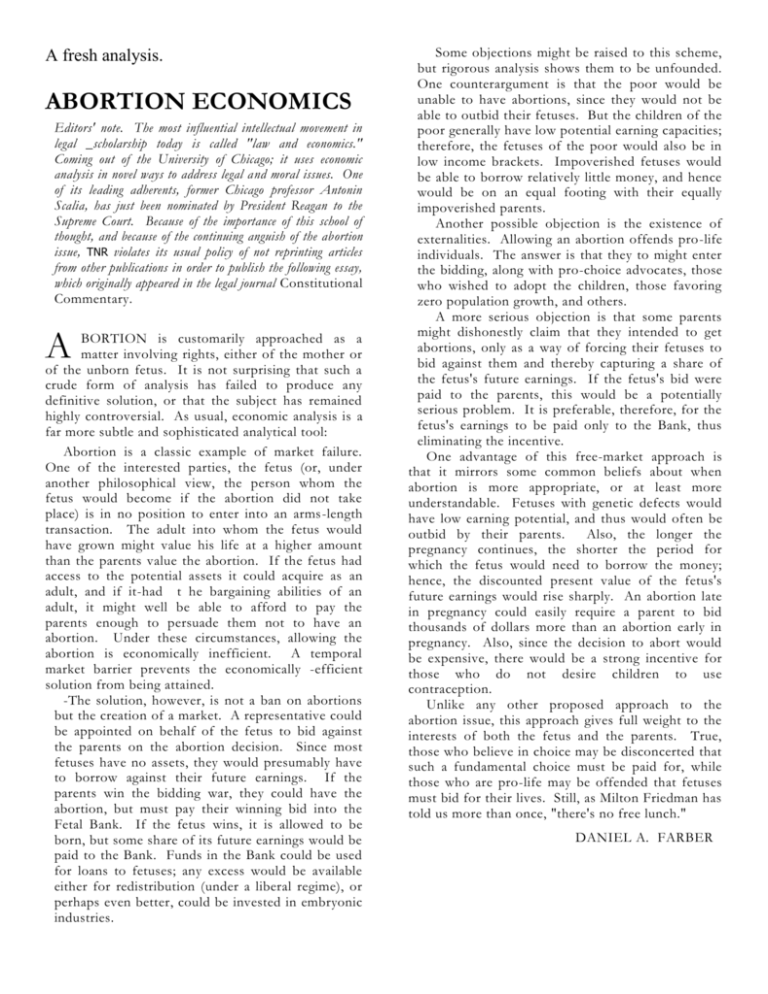
A fresh analysis. ABORTION ECONOMICS Editors' note. The most influential intellectual movement in legal _scholarship today is called "law and economics." Coming out of the University of Chicago; it uses economic analysis in novel ways to address legal and moral issues. One of its leading adherents, former Chicago professor Antonin Scalia, has just been nominated by President Reagan to the Supreme Court. Because of the importance of this school of thought, and because of the continuing anguish of the abortion issue, TNR violates its usual policy of not reprinting articles from other publications in order to publish the following essay, which originally appeared in the legal journal Constitutional Commentary. A BORTION is customarily approached as a matter involving rights, either of the mother or of the unborn fetus. It is not surprising that such a crude form of analysis has failed to produce any definitive solution, or that the subject has remained highly controversial. As usual, economic analysis is a far more subtle and sophisticated analytical tool: Abortion is a classic example of market failure. One of the interested parties, the fetus (or, under another philosophical view, the person whom the fetus would become if the abortion did not take place) is in no position to enter into an arms-length transaction. The adult into whom the fetus would have grown might value his life at a higher amount than the parents value the abortion. If the fetus had access to the potential assets it could acquire as an adult, and if it-had t he bargaining abilities of an adult, it might well be able to afford to pay the parents enough to persuade them not to have an abortion. Under these circumstances, allowing the abortion is economically inefficient. A temporal market barrier prevents the economically -efficient solution from being attained. -The solution, however, is not a ban on abortions but the creation of a market. A representative could be appointed on behalf of the fetus to bid against the parents on the abortion decision. Since most fetuses have no assets, they would presumably have to borrow against their future earnings. If the parents win the bidding war, they could have the abortion, but must pay their winning bid into the Fetal Bank. If the fetus wins, it is allowed to be born, but some share of its future earnings would be paid to the Bank. Funds in the Bank could be used for loans to fetuses; any excess would be available either for redistribution (under a liberal regime), or perhaps even better, could be invested in embryonic industries. Some objections might be raised to this scheme, but rigorous analysis shows them to be unfounded. One counterargument is that the poor would be unable to have abortions, since they would not be able to outbid their fetuses. But the children of the poor generally have low potential earning capacities; therefore, the fetuses of the poor would also be in low income brackets. Impoverished fetuses would be able to borrow relatively little money, and hence would be on an equal footing with their equally impoverished parents. Another possible objection is the existence of externalities. Allowing an abortion offends pro-life individuals. The answer is that they to might enter the bidding, along with pro-choice advocates, those who wished to adopt the children, those favoring zero population growth, and others. A more serious objection is that some parents might dishonestly claim that they intended to get abortions, only as a way of forcing their fetuses to bid against them and thereby capturing a share of the fetus's future earnings. If the fetus's bid were paid to the parents, this would be a potentially serious problem. It is preferable, therefore, for the fetus's earnings to be paid only to the Bank, thus eliminating the incentive. One advantage of this free-market approach is that it mirrors some common beliefs about when abortion is more appropriate, or at least more understandable. Fetuses with genetic defects would have low earning potential, and thus would often be outbid by their parents. Also, the longer the pregnancy continues, the shorter the period for which the fetus would need to borrow the money; hence, the discounted present value of the fetus's future earnings would rise sharply. An abortion late in pregnancy could easily require a parent to bid thousands of dollars more than an abortion early in pregnancy. Also, since the decision to abort would be expensive, there would be a strong incentive for those who do not desire children to use contraception. Unlike any other proposed approach to the abortion issue, this approach gives full weight to the interests of both the fetus and the parents. True, those who believe in choice may be disconcerted that such a fundamental choice must be paid for, while those who are pro-life may be offended that fetuses must bid for their lives. Still, as Milton Friedman has told us more than once, "there's no free lunch." DANIEL A. FARBER
